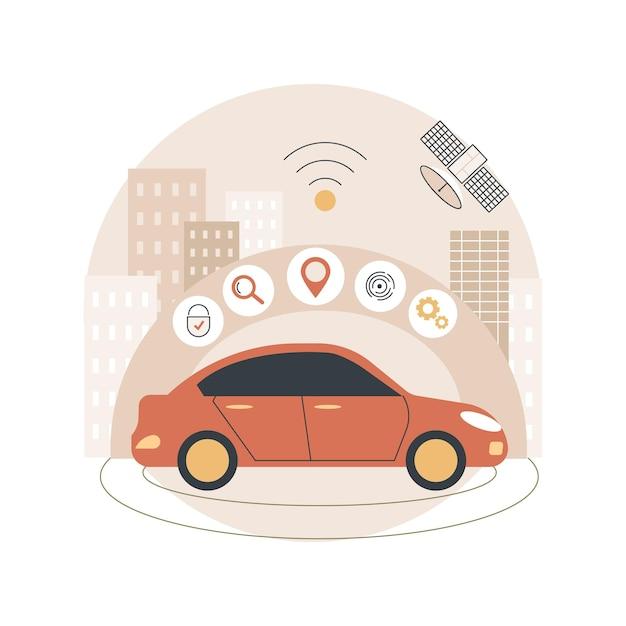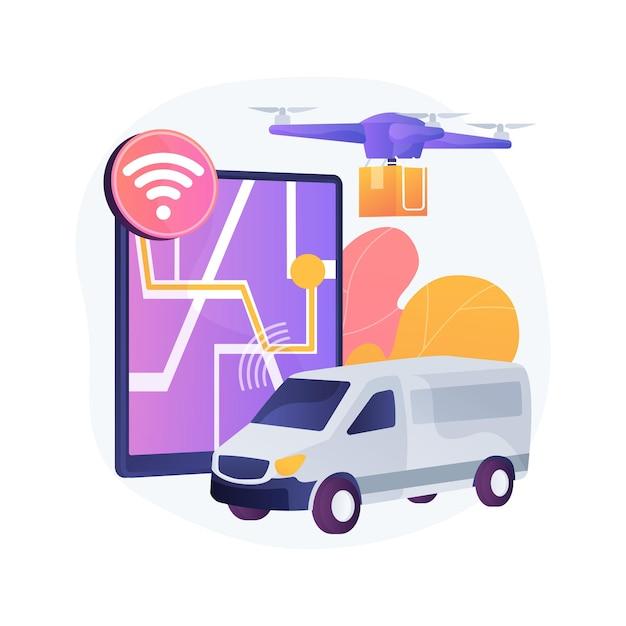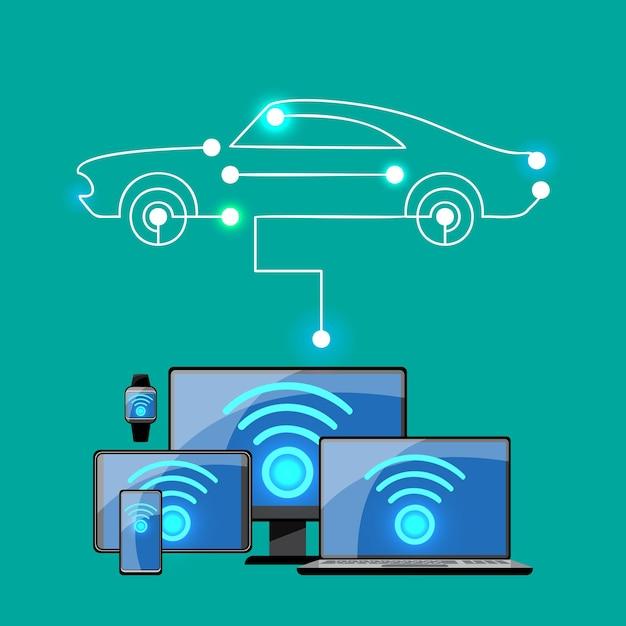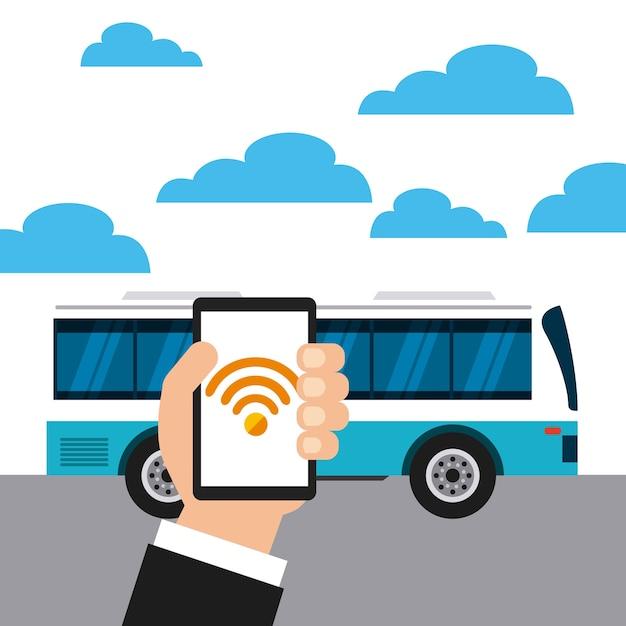Imagine a world where transportation services like buses could operate flawlessly, ensuring the safety and security of passengers while reducing operational costs. Bus telematics technology is making this idea a reality. But what exactly is telematics, and what benefits does it offer for buses?
Telematics, in simple terms, involves the collection and transmission of data related to specific systems and processes in real-time. It is a technology that has revolutionized the transportation industry, providing valuable insights and intelligent solutions that enhance the overall travel experience while saving money and boosting operational efficiencies.
In the context of buses, telematics refers to the integration of various technologies like GPS, on-board cameras, sensors, and communication systems to gather relevant data, including vehicle location, speed, fuel consumption, and driver behavior. This data is then transmitted to a central system that processes it, allowing transportation companies to monitor and optimize various aspects of their fleet operations.
Telematics in buses is becoming increasingly popular due to its wide range of benefits. Some of these benefits include improved safety, fuel economy, maintenance management, route optimization, and enhanced customer experience. By utilizing telematics, transportation companies can ensure their passengers are safe and comfortable while cutting operational costs and maximizing profits.
But what is the difference between GPS and telematics, and how are they used in the context of buses? Stay tuned, for a detailed breakdown of these concepts and how they are applied in the transportation industry!
Bus Telematics – A Comprehensive Guide
If you’re a bus operator or fleet manager, monitoring your vehicles’ operations, driver behavior, and fuel usage is essential for ensuring optimal performance, safety, and profitability. That’s where bus telematics comes in.
What is bus telematics
Bus telematics refers to the use of technology, such as GPS, sensors, and cameras, to collect and transmit data about a bus’s performance, location, and driver behavior to a central server. This data can be used to optimize bus maintenance, ensure safe driving practices, and improve fuel efficiency, among other things.
How does bus telematics work
Bus telematics systems use a combination of hardware and software to collect and analyze data. The hardware usually consists of a GPS device, sensors (such as those that track fuel usage or brake performance), and cameras. The software is responsible for collecting, collating, and analyzing the data. This data is then transmitted to a central server, where it can be viewed and analyzed by bus operators or fleet managers.
What are the benefits of bus telematics
There are numerous benefits to using bus telematics, including:
- Improved fuel efficiency: By monitoring fuel usage and driver behavior, bus telematics can help reduce fuel consumption, leading to significant cost savings.
- Increased safety: Bus telematics can help improve driver behavior by monitoring aspects such as speed, braking, and acceleration, reducing the risk of accidents.
- Streamlined maintenance: By monitoring a bus’s performance in real-time, bus telematics systems can identify potential maintenance issues before they become major problems, reducing downtime and repair costs.
- Better customer service: Bus telematics can help improve on-time performance, enabling operators to provide better service to their customers.
Bus telematics is a powerful tool that can help bus operators and fleet managers run their businesses more efficiently and effectively. By providing real-time data about a bus’s performance, location, and driver behavior, bus telematics can help reduce costs, improve safety, and increase customer satisfaction.
What Exactly is Telematics
Telematics is a term used to describe the technology that allows you to track the location, movements, and behavior of a vehicle remotely. It involves the use of GPS, cellular, and other wireless communication technologies to collect and transmit data to a central server. Simply put, telematics is the backbone of fleet management, allowing managers to make informed decisions based on real-time data.
Understanding the Basics
At its core, telematics provides a wealth of information about a vehicle, such as its location, speed, and direction of travel. It can also track more advanced metrics, such as acceleration, braking, fuel consumption, and engine performance. This data can be used to optimize routes, improve driver behavior, and reduce fuel consumption, among other benefits.
How it Works
Telematics works by embedding a device in a vehicle that collects data and sends it to a central server. The device receives signals from GPS satellites and uses cellular or wireless networks to transmit data to the server. This data can then be used to generate reports, alerts, or notifications that help managers make informed decisions.
Benefits of Telematics
Telematics technology has revolutionized the way fleet managers operate. It offers a range of benefits, including improved safety, reduced costs, and increased efficiency. With telematics, companies can track vehicle location in real-time, monitor driver behavior, optimize routes, and minimize downtime. In addition, telematics can be used to improve customer service, by providing accurate, real-time delivery information.
Telematics is a powerful technology with a broad range of applications. It is transforming the way companies manage their fleets, by providing a wealth of data that can be used to make informed decisions, improve safety, and increase efficiency. Whether you operate a small delivery fleet or a large transportation company, telematics can help you streamline operations, reduce costs, and improve customer satisfaction.
Telematics Examples
Telematics has become an integral part of modern transportation systems. This technology allows carriers to improve their fleet’s performance, reduce fuel consumption, and mitigate accidents. In this section, we’ll explore some examples of telematics in action.
Real-time Tracking
One of the most significant benefits of telematics is real-time tracking. Fleet managers can keep tabs on their vehicles’ location, speed, and routes. With telematic devices installed in each vehicle, fleet managers can track every vehicle with pinpoint accuracy. As a result, fleet managers can optimize routes, reduce fuel consumption, and ensure on-time delivery.
Predictive Maintenance
Telematics also helps carriers with predictive maintenance. The technology allows fleet managers to monitor their vehicles’ health in real-time and identify potential problems before they become major issues. By providing early warning alerts for maintenance issues, carriers can reduce unplanned downtime and repair costs and keep their fleet running efficiently.
Driver Safety
Telematics can also improve driver safety. By monitoring driver behavior, telematics devices can alert fleet managers to risky or dangerous driving habits such as sudden acceleration or hard braking. Fleet managers can then use this data to train drivers and promote safe driving habits, reducing the likelihood of accidents.
ELD Compliance
Telematics devices can also ensure compliance with electronic logging device (ELD) regulations. With ELDs installed in each vehicle, drivers can easily monitor and record their hours of service, reducing the likelihood of violations and fines.
Fuel Efficiency
Finally, telematics can help carriers improve fuel efficiency. By monitoring fuel consumption and identifying potential fuel-wasting habits, fleet managers can implement policies to reduce fuel consumption, such as reducing idle time, optimizing routes, and promoting fuel-efficient driving habits.
In conclusion, telematics is a game-changer for modern transportation systems. With real-time tracking, predictive maintenance, driver safety, ELD compliance, and fuel efficiency, carriers can optimize their fleets’ performance and improve their bottom line.
Benefits of Telematics
Telematics technology has become a significant innovation for the transportation sector. It has revolutionized the way buses are managed, monitored, and operated. The following are some of the benefits of using telematics for bus fleet management.
Enhanced safety
Telematics can enhance safety in various ways. It can monitor driver behavior, detect accidents, and provide real-time feedback to drivers. The technology can help to reduce speeding, harsh braking, and other risky driving behaviors, reducing the risk of accidents. Additionally, telematics can help to track the location of the buses, ensuring that they follow designated routes and schedules, thus minimizing the risk of getting lost or stuck in traffic.
Increased Efficiency
Telematics allows bus operators to optimize the utilization of their vehicles. It can track the fuel consumption, maintenance needs, and mileage of buses. As a result, bus operators can identify vehicles that may require maintenance, reducing downtime and repair costs. Additionally, telematics can help optimize the routes taken by the bus, saving time, and fuel costs.
Better Customer Service
Telematics can improve the customer experience by providing real-time information about the location and arrival times of buses. Passengers can use mobile apps or other devices to track the location of their buses, giving them greater control over planning their trips. Additionally, operators can use telematics to monitor passenger volumes, enabling them to deploy additional buses during peak hours.
Data Collection and Analytics
Telematics generates a vast amount of data that can be used to analyze trends and identify areas for improvement. Operators can use this data to identify maintenance needs, improve fuel efficiency, and optimize routes. Telematics can also help to identify opportunities for cost savings, providing insights into the performance and utilization of each bus.
Compliance with Regulatory Standards
Telematics can help bus operators comply with regulatory standards, such as safety and environmental regulations. It can provide real-time information to regulators and data for compliance reports. This ensures that bus operators maintain the required standards for their vehicles, drivers, and operations.
In conclusion, the benefits of telematics are numerous and varied, making it an essential technology for bus operators. By enhancing safety, increasing efficiency, improving customer service, and collecting data, telematics can help operators improve their business and provide a better experience for their customers.
What is Telematics in a Bus
Telematics refers to the use of technology to monitor and manage vehicles, equipment, or assets. In the context of a bus, telematics involves using sensors, GPS tracking devices, and communication technologies to collect and transmit data about the bus and its surroundings.
How does Telematics work in a Bus
Telematics systems in a bus collect and transmit a variety of data, including the bus’s location, speed, fuel consumption, engine performance, passenger count, and more. The system uses GPS technology to track the bus’s location and monitor its movements. This information is then transmitted to a central control center, where it can be analyzed and used to optimize the bus’s performance, ensure its safety, and improve the overall efficiency of the transportation system.
What are the Benefits of Telematics in a Bus
Telematics in a bus provides several benefits to bus operators, government agencies, and passengers. Some of these benefits include:
-
Improved fuel efficiency: Telematics systems in a bus can monitor the bus’s fuel consumption in real-time and provide feedback to the driver on how to optimize driving behavior to reduce fuel consumption.
-
Enhanced safety and security: Telematics systems in a bus can monitor the bus’s speed and location to ensure it’s staying on the designated route and is not going off the predetermined speed limit.
-
Better maintenance: Telematics systems in a bus can detect potential issues with the bus’s engine or other components, allowing operators to address them before they become more significant problems that can result in costly repairs.
-
Enhanced passenger experience: Telematics systems in a bus help improve the overall passenger experience by ensuring that buses run on time and follow the set route. It also provides accurate information on the bus’s location and estimated arrival times, which helps passengers plan their commute.

In conclusion, Telematics in a bus is a technology that allows monitoring and managing the bus’s performance, safety, and passenger experience. By collecting and analyzing relevant data in real-time, telematics systems can improve the efficiency of the transportation system, reduce maintenance costs, and enhance the overall experience for passengers.
What are Telematics Used For
Telematics are a game-changer for the transportation industry. But what are telematics used for in this industry? You may have heard the buzzwords “GPS tracking” or “fleet management,” but telematics is much more than that!
Enhancing Vehicle Safety
Telematics helps improve the safety of fleets by providing real-time alerts and driver behavior analysis. It ensures that vehicles are not driven beyond the speed limit, and it also tracks other risky driving behaviors. In the event of a collision, it enables automatic notifications to be sent, leading to faster response times and increased safety.
Vehicle Diagnostics
Telematics provides fleet managers with insights into vehicle health and diagnostics, such as the engine’s health, fuel efficiency, and battery life. This information can be used to avoid costly repairs and minimize vehicle downtime.
Optimizing Fleet Management
Telematics equipment helps fleet managers track vehicle location and identify routes that are time-consuming, fuel-inefficient, and hazardous. This information enables fleet managers to optimize routes and schedules for their vehicles, leading to increased productivity and profitability.
Tracking Vehicle Efficiency
Telematics systems enable fleet managers to monitor fuel consumption, speed, and idling time. This data helps them streamline fuel efficiency and reduce maintenance costs.
Telematics technology is vital to the transportation industry. By providing real-time updates and critical vehicle information, it ensures enhanced efficiency, safety, and profitability. Whether it’s used to optimize fleet management or improve safety, telematics technology is being embraced by more transportation companies every day.
GPS vs Telematics: What’s the Difference
We often hear the terms “GPS” and “telematics” used interchangeably, but the two are not the same. In this section, we’ll explain the key differences between these two technologies.
GPS
GPS stands for Global Positioning System, a worldwide navigation satellite system used to determine the user’s precise location and time anywhere on earth. GPS technology is widely used in navigation devices, mobile phones, and car tracking systems.
On its own, GPS can only provide location data and time. However, when integrated with other technologies, GPS data can be used to provide valuable information such as speed, direction, and distance.
Telematics
Telematics, on the other hand, is the technology that combines communication, information processing, and location technology to provide detailed information on vehicle performance and driver behavior. The systems collect data using sensors installed in the vehicle, such as the engine control unit (ECU).
Telematics technology provides advanced data beyond just location, including fuel consumption, mileage, tire pressure, engine status, and driver behavior. This data is then analyzed to create actionable insights to improve overall fleet performance and reduce operating costs.
Key Differences
The key difference between GPS and telematics is that GPS only provides location data, while telematics provides a wealth of valuable insights beyond location, including vehicle data and driver behavior. GPS on its own is limited in its usefulness for operations management, while telematics provides a more detailed picture of fleet operations, allowing businesses to make data-driven decisions.
In conclusion, while GPS and telematics are related technologies, they serve different purposes. GPS is a location tracking technology, while telematics is an advanced system that collects comprehensive data on vehicle performance and driver behavior. By utilizing both GPS and telematics technologies, businesses can gain valuable insights into their fleet operations and make informed decisions to improve their bottom line.


